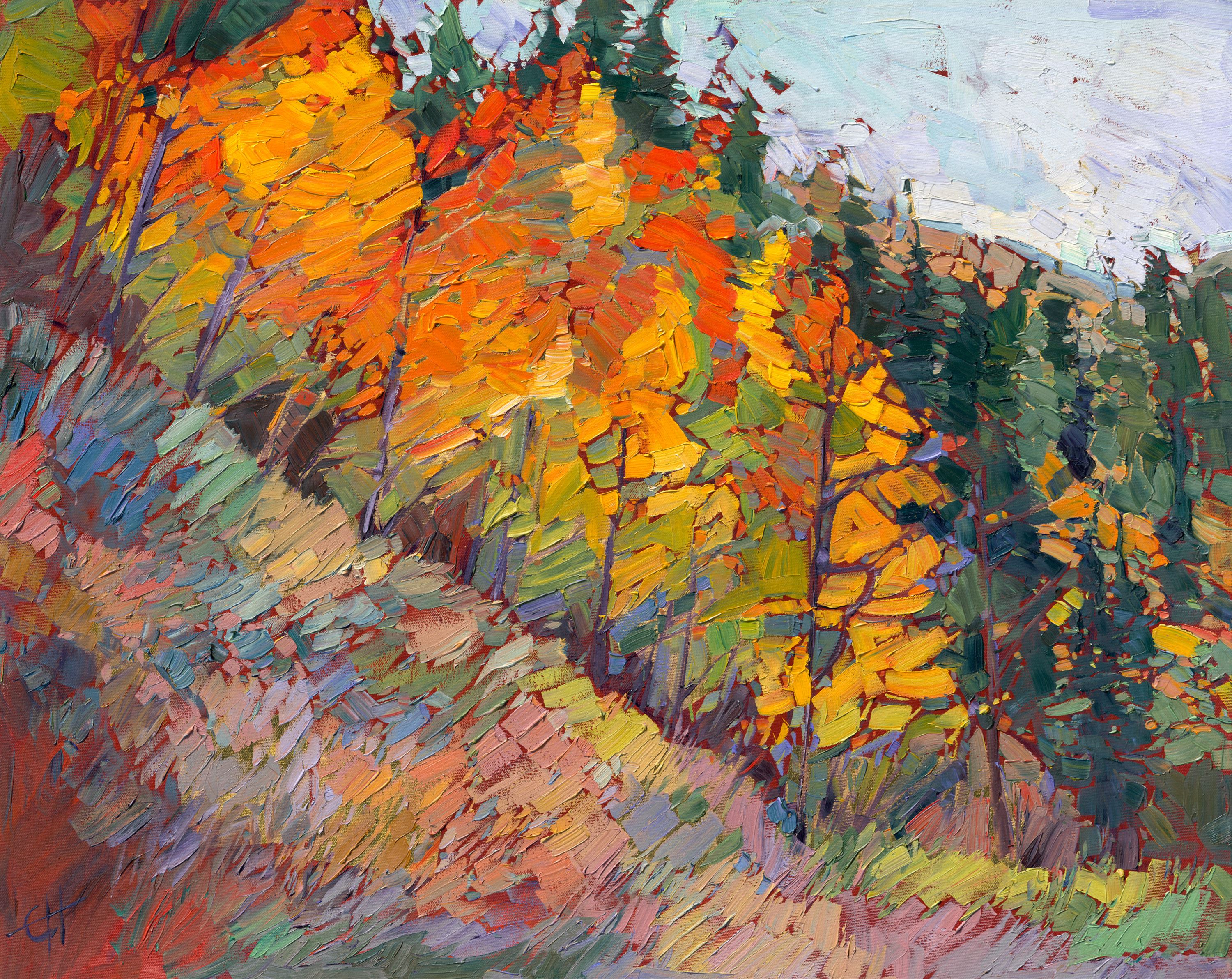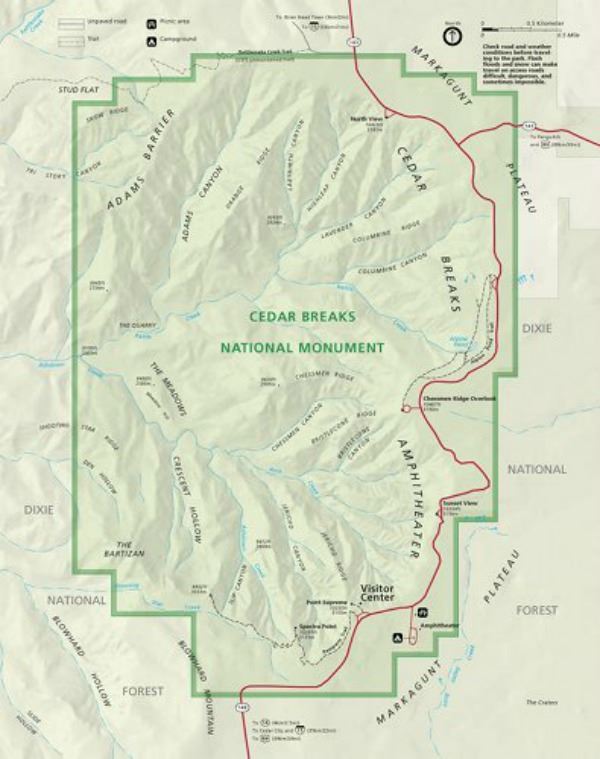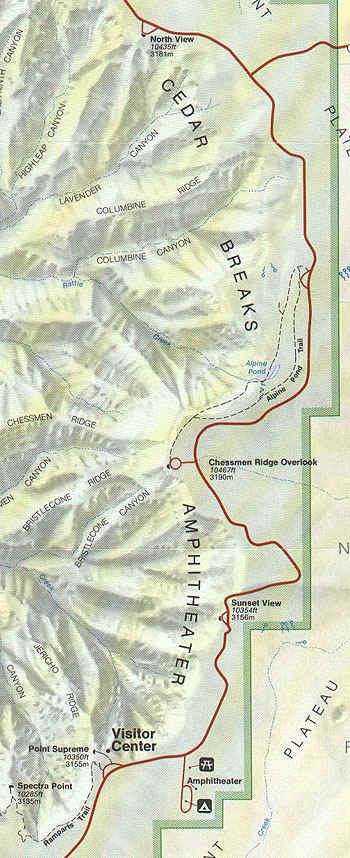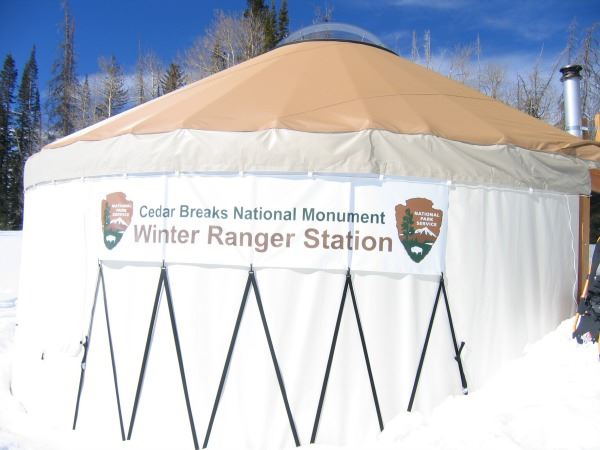Subtotal
$0
U.S. Shipping
FREE
Saved for Later
Shopping Cart
Subtotal
$0
U.S. Shipping
FREE
Saved for Later

Woods of Gold by Erin Hanson
About Woods of Gold
Woods of Gold, by Erin Hanson, is part of the artist's “24 Karat Collection.” The paintings in this collection are created using sheets of 24 karat gold leaf applied directly to the canvas. The thin sheets of genuine gold gleam with subtle light from between the brush strokes, catching the light and giving the painting a glow from within.
Modeled after the aspen trees in Cedar Breaks National Monument, Woods of Gold captures the fleeting magic of these famous trees as they shift from summer green to their fall colors. Exactly when a given mountainside range of aspens will compete with Cedar Breaks’ equally breathtaking hues no one knows - only that it’s probably sometime in September. Once the golden hues arrive, they typically flee within a week. Unless they are captured by camera or perhaps by the swift brush of Erin Hanson.
Painting Specifications
Year Painted: 2015
Medium: Oil on canvas & 24 kt gold leaf
Size: 30 x 24 in
Price: $3,600
Status: Original Sold
This painting was created on 3/4” canvas and arrives framed in a classic gilded frame, ready to hang.
About the Location
Photo Credit: Temple Square Blog
Cedar Breaks is a natural amphitheater formed from an eroded canyon east of Cedar City, Utah. The name Cedar Breaks hails back to the early settlers who called the area the Badlands, or “Breaks.” The cedar portion is due to the same settlers terming the many juniper trees that grow here as “cedars.” The name stuck, despite the inaccuracy.

While Cedar Breaks is of little use in practical terms (thus Badlands), the iron and manganese throughout the eroding walls make for stunning variations of reds, yellows, and oranges. Perfect for painting.
Cedar Breaks is also known for the hoodoos prevalent amid the eroded canyons. Hoodoos are tall rock formations, wind, and rain-carved spires. They could be loosely described as a sort of chunky column with a large hairdo. In fact, In French, they are called demoiselles coiffées ("ladies with hairdos").
Some say the word “hoodoo” comes from “voodoo,” but it depends whom you ask. Apparently, the word refers to a malevolent or evil supernatural force; these wind-whipped rock formations were considered to be evil in nature, back in the day.
Cedar Breaks can be a relatively quick scenic tour if you’re not lingering for photographic shots or painting. Plan on 2 to 5 hours, depending on what you want to do. If you’re only driving, the road through the monument is about 5 miles long with about 5 stops at points of interest. If you prefer to stop and hike, there are about 3 miles of established walking/hiking available. Visiting Zion and Bryce Canyon? Add Cedar Breaks to itinerary while traveling between Zion and Bryce. During the summer, Cedar Breaks is an easy day trip from Las Vegas.
If you’re traveling north along Interstate 15 from Las Vegas, Cedar Breaks is about a 3-hour drive. Once you’ve reached Cedar City, take State Highway 14 east towards Bryce Canyon. Once you reach UT-148, which is about 20 miles, you’ll turn north, winding along the eastern edge of the monument until you reach UT-143 at the north end of the monument. At that point you can either head east on UT-143 towards Bryce Canyon, or north to pass through the Brian Head resort area, eventually returning to Interstate 15.
Well worth the visit, Cedar Breaks’ breathtaking views are the result of sedimentation, uplift, and erosion over millions of years. The amphitheater, the most well-known feature of Cedar Breaks National Monument, extends about 3 miles long and drops more than 2,000 feet deep. Park Rangers cater to visitors with educational guided tours and activities at all times of the year.
 There are several trails available to hike. While most of them are short, the higher altitude makes them moderately strenuous and generally colder, so be sure to bring a jacket. The higher altitude means less oxygen, so activity will be more strenuous.
There are several trails available to hike. While most of them are short, the higher altitude makes them moderately strenuous and generally colder, so be sure to bring a jacket. The higher altitude means less oxygen, so activity will be more strenuous.
During the winter months, most of Cedar Breaks can be a bit inaccessible. All the visitor interest points line the edge of a high plateau called the Markagunt Plateau. A small portion of the western edge of the plateau drops off and forms the famous Cedar Breaks amphitheater. Due to the high elevation of the Markagunt Plateau (10,000ft+), the road following the edge of the monument (UT-148) is generally closed to car traffic from October through May. Snow levels can reach 15-20+ feet high, but the UT-148 is generally kept groomed as a snowmobile trail (weather permitting). Skiing and snowshoes are allowed off the groomed trail. Always call ahead to verify conditions.
Other than summer outdoor camping, there is no lodging available at the monument, so planning ahead is crucial. The closest lodging is available in Cedar City West of Cedar Breaks, or Brian Head to the North off UT-143 (143 is kept plowed during the winter). To plan out hiking and camping activities at the Cedar Breaks National Monument, take advantage of this trip planning resource, courtesy of the National Park Service.
Cedar Breaks Monument is but half the story when it comes to painting the landscape. The region is also well known for summer wildflowers, which begin blooming in June. Every July the annual Wildflower Festival is a great time for artists and visitors to capture the fields and mountainsides draped in color.
Photo Credit: nps.gov
Overlapping the Wildflower Festival is the Cedar Breaks National Monument Plein-air painting competition. This year seven new artists will be juried and chosen to participate in the Cedar Breaks Plein-air event. Three artists from previous competitions will also be chosen to participate. Art mediums allowed include oil, pastels, watercolor, and pencil. There is no charge to submit an application, and artist applications to participate may be submitted after November 1st, 2015 through February 1st, 2016.
Two visitor centers are available. Considering the general “in the middle of nowhere” nature of the Cedar Breaks National Monument, it’s good to understand where they are, especially when visiting in the Winter. Calling ahead will always be a prudent move.
Point Supreme Visitor Center
Spring, Summer & Fall
Photo Credit: roadtrippin.fr
Visiting Cedar Breaks National Monument does require paying a $5 fee per person (children under 15 are free). All fees are paid at the Point Supreme Visitor Center. There is a campground available during Summer months, also requiring a fee. For more information about availability and campground pricing, visit the Cedar Breaks camping information page.
Open: Daily, late May to mid-October, 9:00 a.m. to 6:00 p.m.
Phone: (435) 586-0787 ext. 4031
Special Programs: Daily Ranger talks
Exhibits: Yes
Available Facilities: Restrooms are located at the parking lot near the fee station. The bookstore is located within the Visitor Center.
Additional Information: The Visitor Center at Point Supreme was built in 1937 by a crew from the Civilian Conservation Corps (CCC).
Winter Ranger Station
Winter Months
 The Winter Ranger Station is a yurt replete with volunteer staffers and hot chocolate (assuming the location is accessible). If you’re staying at the Brian Head Resort off UT-143, travel south and take UT-148, which follows the East side of the Cedar Breaks Monument. The Winter station is located about halfway into the Monument area, at the Chessman Ridge Overlook.
The Winter Ranger Station is a yurt replete with volunteer staffers and hot chocolate (assuming the location is accessible). If you’re staying at the Brian Head Resort off UT-143, travel south and take UT-148, which follows the East side of the Cedar Breaks Monument. The Winter station is located about halfway into the Monument area, at the Chessman Ridge Overlook.
The Ranger Station is only open on Saturday and Sunday from 10 AM to 2 PM from mid-November to late March, weather permitting. While the station doesn’t have a phone, you can call the Monument Phone (mid-June--mid-October) at (435) 586-0787 or the Administrative Office Phone (435) 586-9451. Since there is no cell reception at the Monument, call ahead!
While Cedar Breaks may be diminutive compared to close cousins Zion and Bryce, it’s by no means worth missing! With a little extra planning and the right timing, the visit is worth the drive. There are many other attractions nearby, so I suggest staying for 2-5 days in the area to catch all the sights. Remember to pack your wide-lens camera - you’ll need it.
Article by Daniel Trevor
Discover the artist at the forefront of modern impressionism.

About Erin
ERIN HANSON has been painting in oils since she was 8 years old. As a teenager, she apprenticed at a mural studio where she worked on 40-foot-long paintings while selling art commissions on the side. After being told it was too hard to make a living as an artist, she got her degree in Bioengineering from UC Berkeley. Afterward, Erin became a rock climber at Red Rock Canyon, Nevada. Inspired by the colorful scenery she was climbing, she decided to return to her love of painting and create one new painting every week.
She has stuck to that decision, becoming one of the most prolific artists in history, with over 3,000 oil paintings sold to eager collectors. Erin Hanson’s style is known as "Open Impressionism" and is taught in art schools worldwide. With millions of followers, Hanson has become an iconic, driving force in the rebirth of impressionism, inspiring thousands of other artists to pick up the brush.